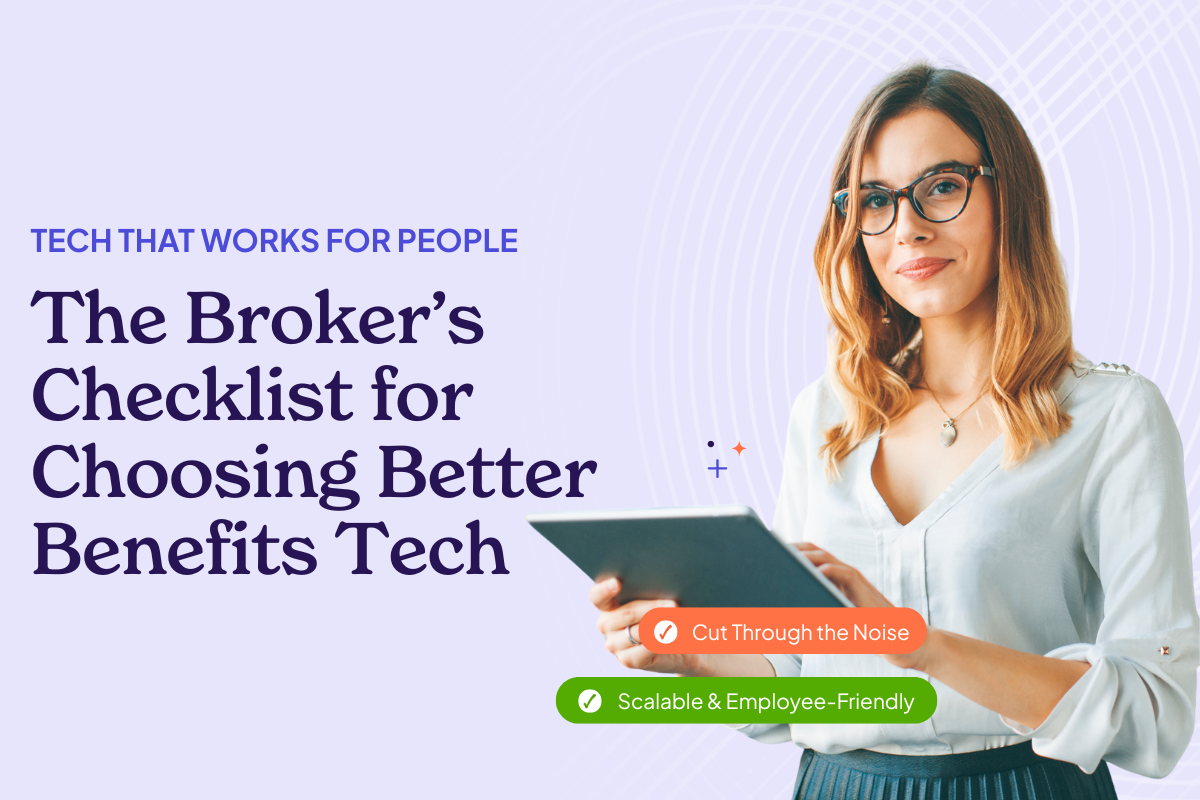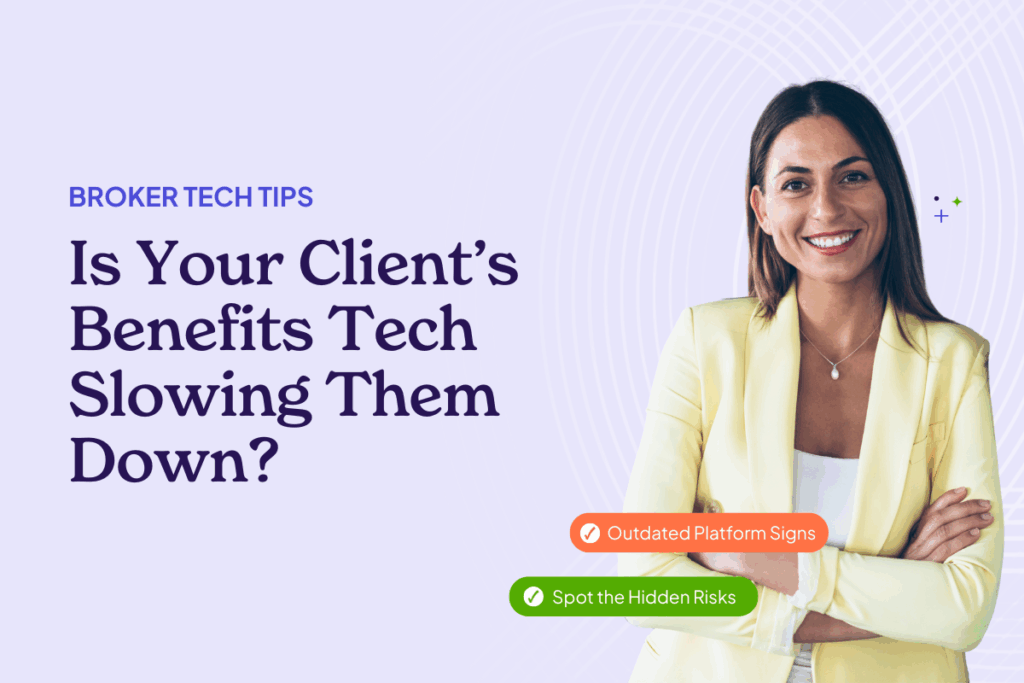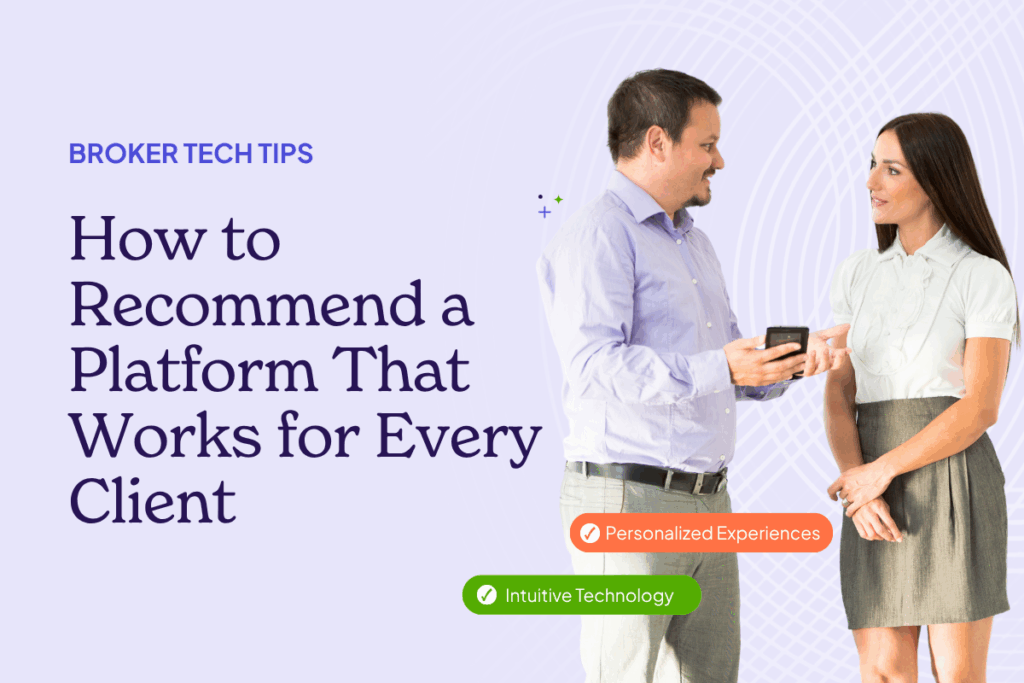How to Help Clients Choose the Right Benefits Tech: A Broker’s Checklist

Because “good enough” tech won’t cut it anymore.
There’s a moment in every broker-client relationship where you can feel the shift.
It’s when your client stops asking, “What plans should we offer?”
and starts asking, “How can we make all this work better?”
That’s when the real advisory work begins—and where the right technology becomes your best ally.
Benefits administration platforms aren’t just background tools anymore. They’re the backbone of how HR teams manage, communicate, and deliver benefits. Get the tech right, and you’re the hero. Get it wrong, and you’ll spend your time putting out fires.
This guide is your checklist for steering clients toward the right benefits technology—without getting lost in the noise.
1. Start with Strategy, Not Software
The first rule of recommending tech? Don’t start with the tech.
Start with the story.
Every client’s benefits strategy should align with their business goals—whether that’s controlling costs, improving retention, or expanding into new markets.
Ask:
- What’s driving your benefits decisions this year?
- Where do you feel the biggest administrative strain?
- How do benefits support your workforce goals?
You’re not just collecting answers; you’re diagnosing the problem. Because when you understand why a client needs new tech, you’ll know exactly what they need—and just as importantly, what they don’t.
2. Fit the Tech to the Workforce (Not the Other Way Around)
Every workforce has its own rhythm. Some are remote, others run shifts around the clock. Some have a dozen carriers and union contracts; others just want to simplify.
If you recommend the same solution for all of them, you’re setting someone up for disappointment.
Think of it like shoe shopping—you wouldn’t send a marathoner and a construction worker home with the same pair. Tech has to fit the way your clients work.
Ask:
- Who makes up your workforce? Remote, hybrid, or on-site?
- Do you have multiple locations or seasonal employees?
- How do employees access benefits information today?
The right platform doesn’t just process data—it reflects the reality of how people work and communicate.
3. Look for Flexibility and Scalability
If a benefits platform can’t adapt, it’s already obsolete.
Your client might be small today and multi-state tomorrow. The system you recommend should scale with that growth, not break under it.
Look for:
- Configurable plan design and workflows
- Support for complex, multi-carrier structures
- Flexibility for both insured and self-funded plans
As Choosing Tech That Works for Every Client puts it: a strong platform “bends to fit your clients, not the other way around”.
Selerix was built on that principle—but the takeaway isn’t “pick us.” It’s this: choose tech that moves with your clients’ business, not one that makes them move around it.
4. Compliance Tools: The Quiet MVP
Let’s be honest—nobody gets into benefits because they love compliance. But missing ACA filings or COBRA notifications? That’s a fast track to chaos.
Your clients rely on you to keep them safe from those headaches. The right platform makes that easier.
Your compliance checklist:
- ACA tracking and reporting
- COBRA administration
- State-level mandate management
- Secure audit trails and eligibility tools
A good platform turns compliance from a scramble into a system. As one of our guides put it, if your client’s compliance process feels like a “constant fire drill,” their tech isn’t doing its job.
5. Test the User Experience—For HR and Employees
You can have all the bells and whistles in the world, but if HR hates using the system, it’s game over.
The experience matters. For HR, for employees, and for you.
Because when users struggle, they don’t blame the platform—they blame the broker who recommended it.
Ask for a demo. Click through the system yourself. Try it on a phone.
If you need a manual to navigate the dashboard, that’s a red flag.
Employees today expect benefits to work like their favorite apps—simple, intuitive, and mobile. And HR needs reporting and workflow tools that make their lives easier, not harder.
The best tech doesn’t make people learn how to use it—it makes them wonder how they ever lived without it.
6. Prioritize Integration and Automation
Benefits technology doesn’t live in a vacuum. It needs to play well with others—HRIS, payroll, carriers, you name it.
Ask vendors:
- Are integrations API-driven or file-feed based?
- How often does data sync?
- Can the system scale with new partners or carriers?
When integrations fail, HR pays the price in time and manual fixes. Smooth automation saves clients hours every week and builds trust in your recommendations.
Integrations aren’t a “nice-to-have.” They’re the difference between a streamlined benefits operation and a never-ending game of data whack-a-mole.
7. Service and Support: The Real Test of Partnership
Technology is only as strong as the people behind it.
Ask:
- What’s the implementation process like?
- Is support proactive or reactive?
- Who do clients call when something breaks—someone who knows their business, or a random ticket system?
A platform can look great in a demo, but when open enrollment hits, support is what defines the experience.
At Selerix, we’ve learned that brokers value responsiveness as much as reliability. You deserve a tech partner who stands beside you when things get tough—not one who hides behind a helpdesk.
The Broker’s Benefits Tech Checklist
Here’s a quick summary of what to evaluate before you make your next recommendation:
| Evaluation Area | What to Look For | Why It Matters |
| Strategy Alignment | Ties to client’s goals | Ensures relevance and long-term fit |
| Workforce Fit | Remote, hybrid, multi-site support | Improves adoption and usability |
| Flexibility | Configurable plans, scalable growth | Prevents “outgrowing” the system |
| Compliance | ACA, COBRA, state mandates | Keeps clients safe and confident |
| User Experience | Mobile access, decision support | Drives engagement and satisfaction |
| Integrations | Payroll, HRIS, carrier sync | Reduces manual work and errors |
| Support | Dedicated help, fast resolution | Builds trust with you and clients |
Use this checklist not just to vet tech—but to guide conversations. It shows clients you’re thinking holistically, not just checking boxes.
The Broker’s Advantage: Simplifying the Tech Maze
Choosing benefits technology isn’t your client’s expertise—it’s yours.
And when you help them navigate the maze with clarity and confidence, you become more than a broker. You become the steady hand that makes complexity feel manageable.
That’s how trust is built. That’s how relationships last.
So, the next time a client asks, “What’s the right platform for us?”—you’ll have an answer that’s both strategic and human.
Because the right technology doesn’t just make benefits work better—it makes you the kind of advisor every client wants in their corner.
Recommended Posts:



Ready to simplify the tech maze for your clients?
Download The Broker’s Guide to Recommending Benefits for frameworks, tools, and checklists that help you recommend benefits technology with confidence—and elevate your value as a trusted advisor.

